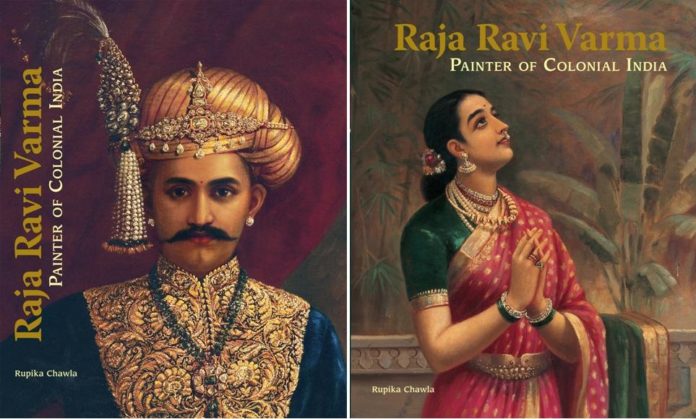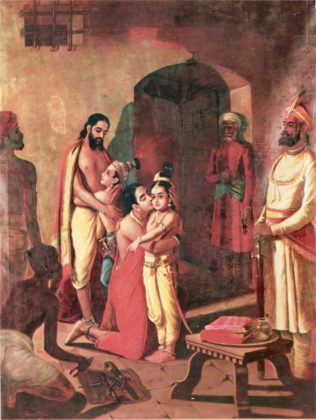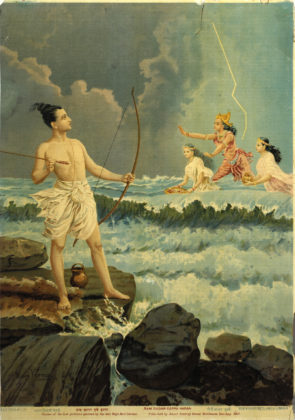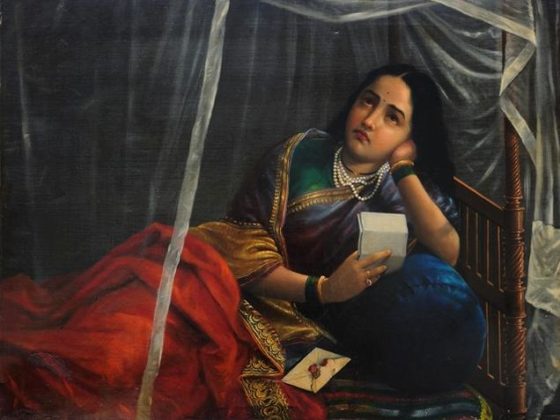Grand Master of Master Artist Late Raja Ravi Varma’s unseen work will be ready for display at Bengaluru 131 works, which were printed after his death, to be displayed from July 8.
This July and Bengaluru will get a lifetime chance to display a rare collection of celebrated painter Raja Ravi Varma’s lithographs for the first time.
In act to showcase his works, the Raja Ravi Varma Heritage Foundation, set up six months ago, will hold a five-week exhibition from July 8 at the National Gallery of Modern Art. All this curated work travel to other countries for display as well.
“We have the rarest collection under one roof that even Ravi Varma himself did not get to see. Most of his lithographs were printed after his demise in 1906,” says Ganesh Shivaswamy, an art collector and one of the trustees of the Foundation.
For the first time, 131 lithographs of Ravi Varma, most from the private collection of Mr. Shivaswamy, will be on display for the public.
“Ever since Ravi Varma’s demise, we have not had a single comprehensive display of all of his lithographs. I have been scrupulously exploring all avenues for 25 years to get the original lithographs in my collection,” said Mr. Shivaswamy.
The reason behind Bengaluru getting to display the lithographs ahead of even Kerala, the painter’s home State, is interesting. Bharani Thirunal Rukmini Bayi Varma, a member of the 6th generation of the family of the painter, lives in the city as her parents moved to Bengaluru from Thiruvananthapuram during Independence. She had set up the foundation.
Ms. Varma says, “First and foremost, Raja Ravi Varma wanted to retire in Bengaluru. He even lived on Link Road, Malleswaram, for some time. He passed away before he realised his dream. He loved the environs and climate of Bengaluru. In a way, the establishment of the foundation here is actually living his dream. It, therefore, seemed most appropriate to start the foundation here.”
She brought three art collectors from the city on board — gallery owner Gitanjali Maini; Ganesh Shivaswamy, a serious collector of lithographs and paintings; and artist Jay Varma, known for his work with colour pencils.
Estimation by the Gurus of the trade that Ravi Varma had completed 134 lithographs.
“But after intensive research, only 131 are available. Out of these, 127 are from my personal collection,” says Mr. Shivaswamy. The rest came from other collectors.
“Every lithograph (at the exhibition) will carry a curatorial note,” ,” says Ms. Maini, CEO of the Foundation.
Experts estimate that Ravi Varma had completed 134 lithographs.
“But after intensive research, only 131 are available. Of these, 127 are from my personal collection,” says Mr. Shivaswamy. The rest came from other collectors.
Raja Ravi Varma Koil Thampuran (29 April 1848 – 2 October 1906) was a celebrated Indian painter and artist. He is considered among the greatest painters in the history of Indian art for a number of aesthetic and broader social reasons.
Ravi Varma born in Kilimanoor, present day Kerala was a prolific painter who depicted scenes from the epics and mythology, and also painted portraits of royal families. He was the first Indian artist to depict cultural themes through European painting techniques and was also one of the first artists to use oil as a medium of painting. His paintings of gods and goddesses and vignettes from mythological tales are well recognized and reproduced even today.
Firstly, his works are held to be among the best examples of the fusion of European techniques with a purely Indian sensibility. While continuing the tradition and aesthetics of Indian art, his paintings employed the latest European academic art techniques of the day. Secondly, he was notable for making affordable lithographs of his paintings available to the public, which greatly enhanced his reach and influence as a painter and public figure. Indeed, his lithographs increased the involvement of common people with fine arts and defined artistic tastes among common people for several decades. In particular, his depictions of Hindu deities and episodes from the epics and Puranas have received profound acceptance from the public and are found, often as objects of worship, across the length and breadth of India.
Raja Ravi Varma was closely related to the royal family of Travancore in the deep south of India (Kerala and Tamil Nadu). Later in his life, two of his granddaughters were adopted into that royal family, and their descendants comprise the totality of the present royal family of Travancore, including the latest three Maharajas (Balarama Varma III, Marthanda Varma III and Rama Varma VII).
Ravi Varma’s oleographs also called chromolithographs were instrumental in taking art to the masses. Oleography (oleo means oil) in essence is a process of reproducing an oil painting on paper to match the exact colours and brushstrokes with the objective of making it look like an oil painting. The technique was pioneered in the 1830s by an Englishman George Boxter but came into wide commercial use only in the 1860s. Oleography was the most popular method of colour reproduction until the end of the 19th century, when more efficient techniques rendered it obsolete.
It is believed that Ravi Varma started the lithographic printing press on the advice of Dewan Madav Rao in Mumbai in 1894 and it was managed by his brother, Raja Varma. The printing press was procured from Germany and the technicians to operate the press were also from Europe. The oleographs were mostly of Hindu dieties and depict scenes from the Mahabharata, Ramayana and the Puranas. The oleographs were very popular and continued to be printed even after Ravi Varma’s death in 1906*.
Image Credit : ravivarma.org































